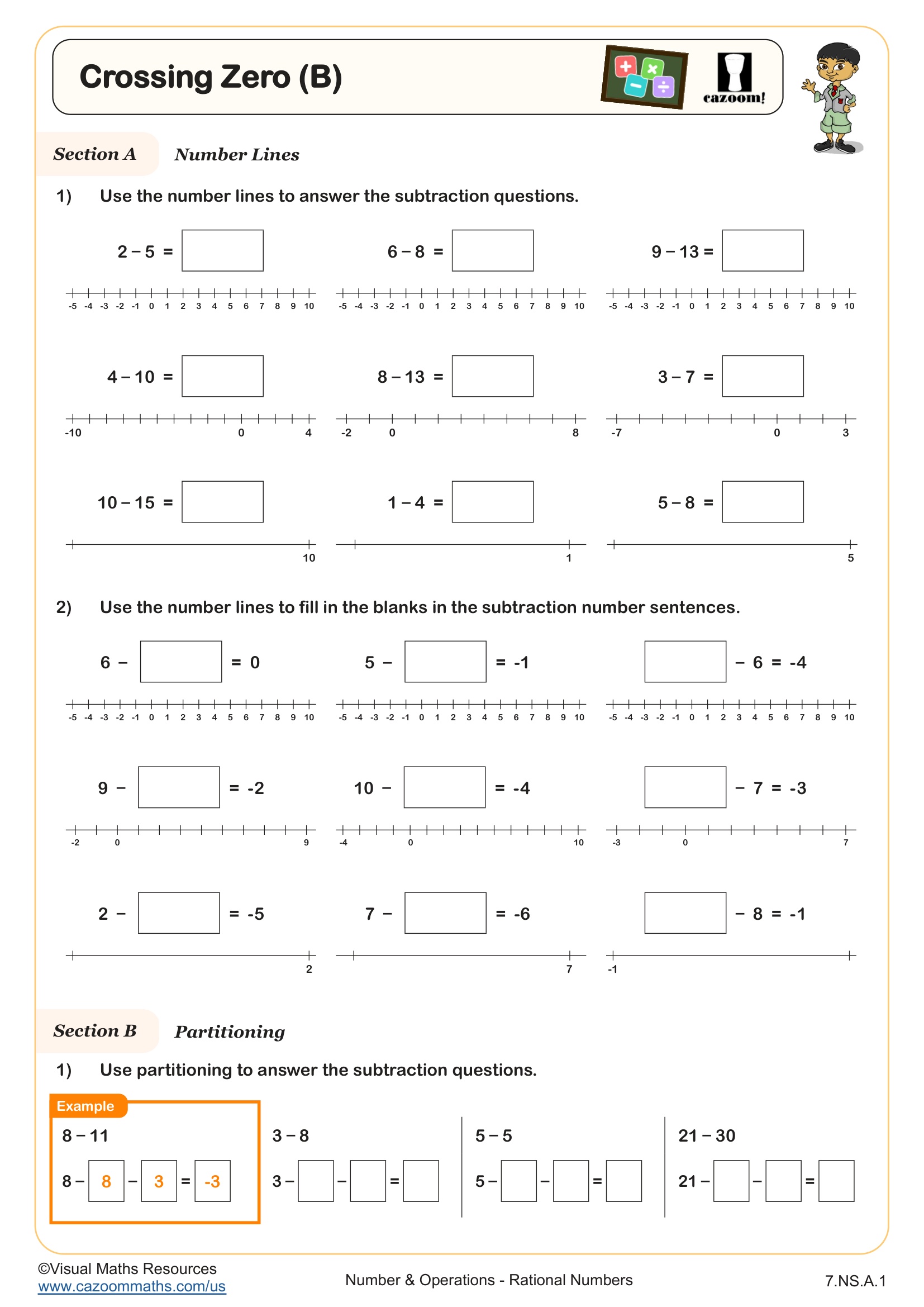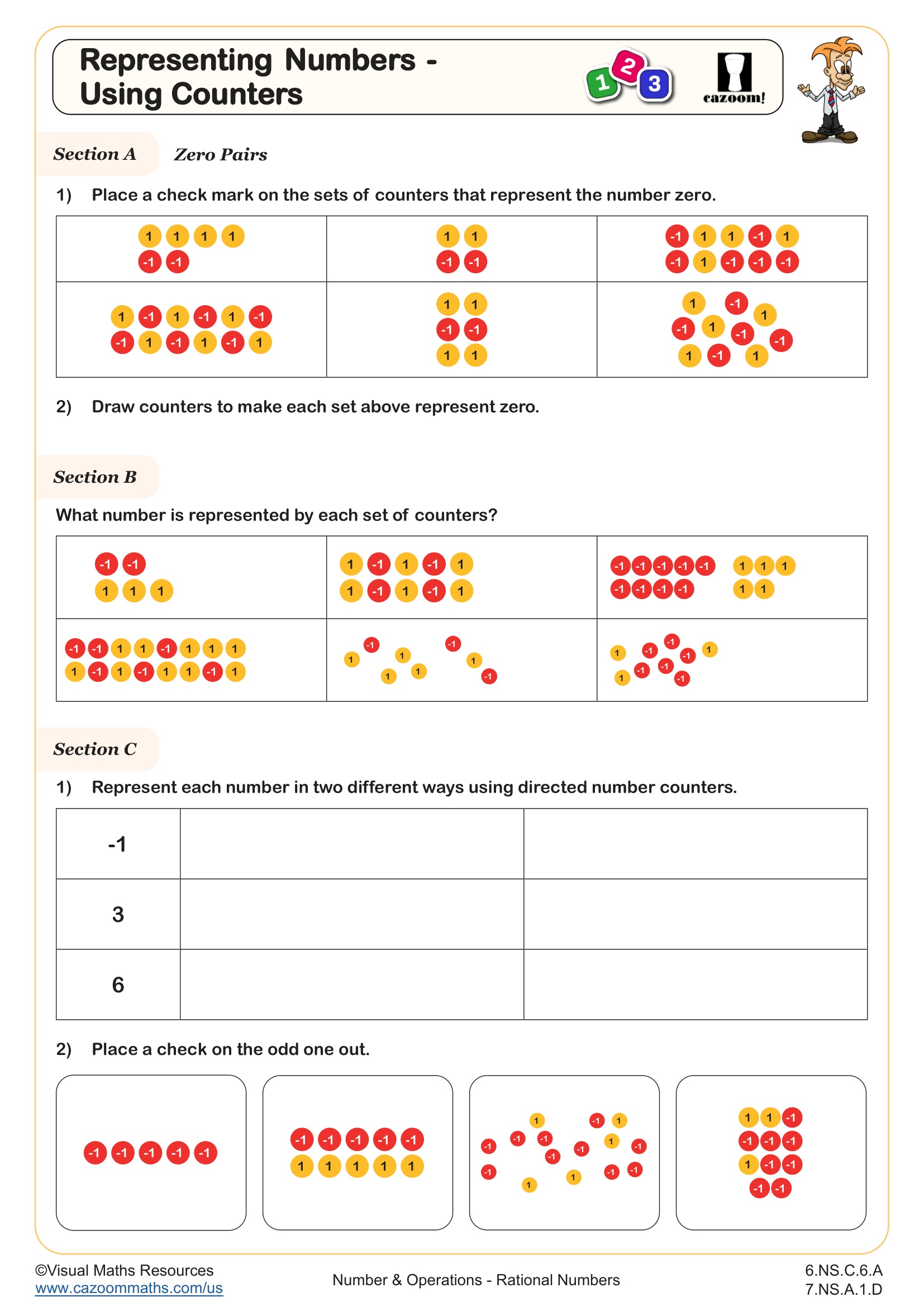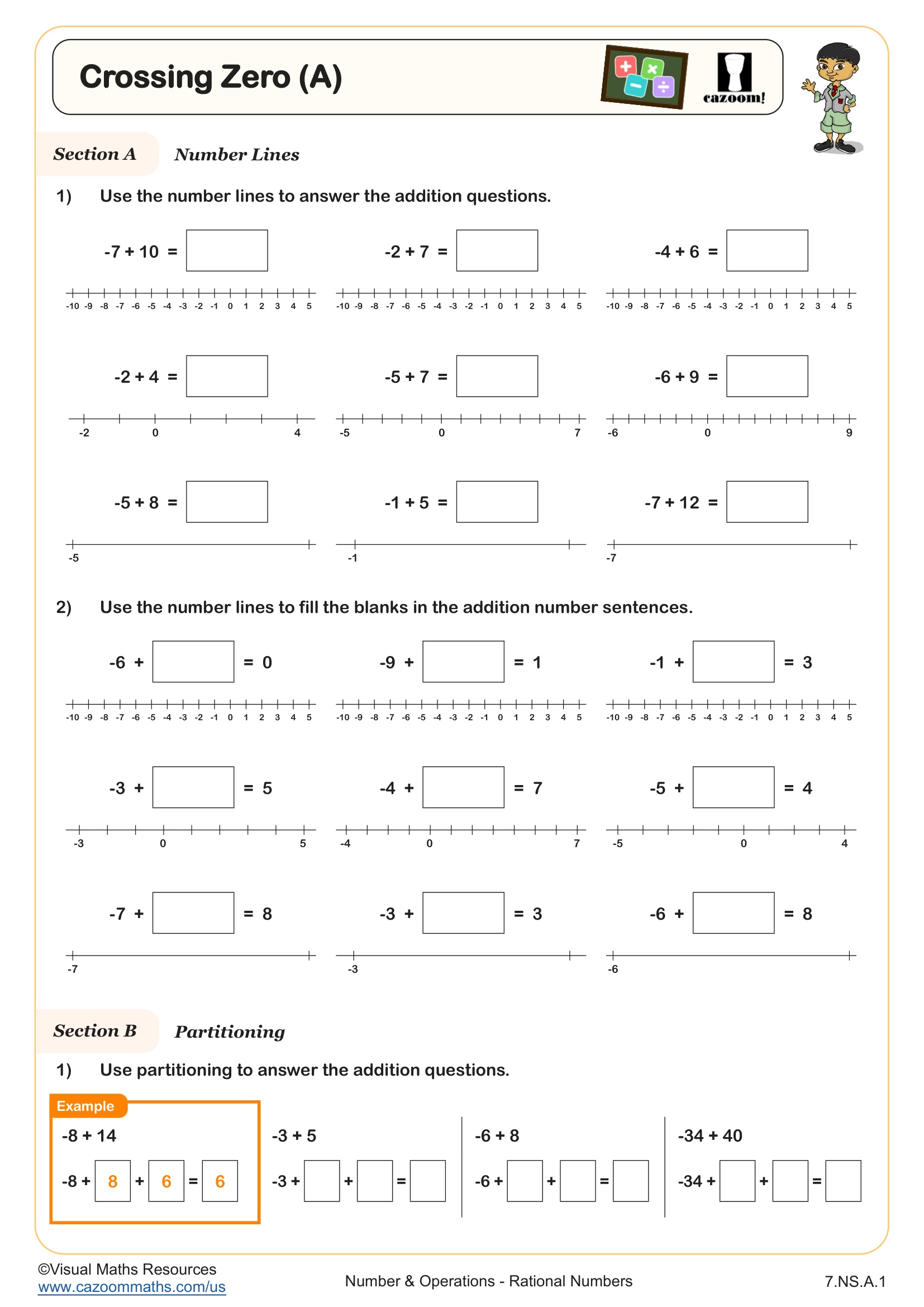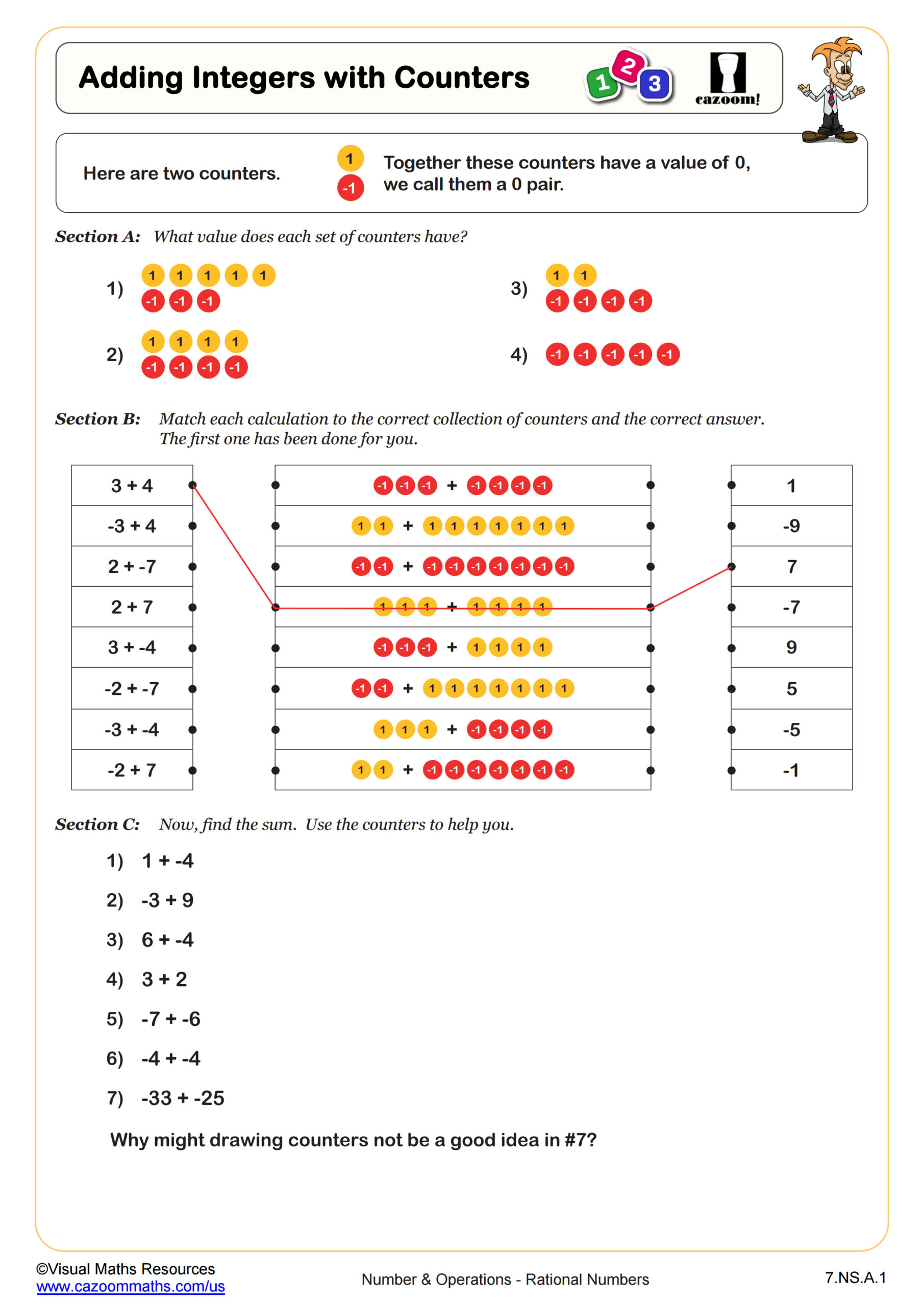Crossing Zero (C) WORKSHEET
Apply and extend previous understandings of addition and subtraction to add and subtract rational numbers; represent addition and subtraction on a horizontal or vertical number line diagram. a. Describe situations in which opposite quantities combine to make 0. For example, a hydrogen atom has 0 charge because its two constituents are oppositely charged. b. Understand p + q as the number located a distance |q| from p, in the positive or negative direction depending on whether q is positive or negative. Show that a number and its opposite have a sum of 0 (are additive inverses). Interpret sums of rational numbers by describing real-world contexts. c. Understand subtraction of rational numbers as adding the additive inverse, p – q = p + (–q). Show that the distance between two rational numbers on the number line is the absolute value of their difference, and apply this principle in real-world contexts. d. Apply properties of operations as strategies to add and subtract rational numbers.
Crossing Zero (C) WORKSHEET DESCRIPTION
This worksheet links the conceptions covered in Calculations Crossing Zero (A) and (B) and further helps to prepare learners for addition and subtraction of directed numbers.
In section A, students are provided with an example showing how a number line is used to answer a subtraction question that crosses zero and then 7 number lines that have been used for either addition or subtraction and are asked to write the number sentence that the number line represents.
Section B consists of 6 number sentences to complete with a mixture of positive and negative answers.
Then in section C, students consider what makes an answer to different calculations positive, negative or zero as they suggest numbers to fit different conditions such as A - B is positive.
Finally in section D, there are addition and subtractions to answer that involve three terms and two operations.
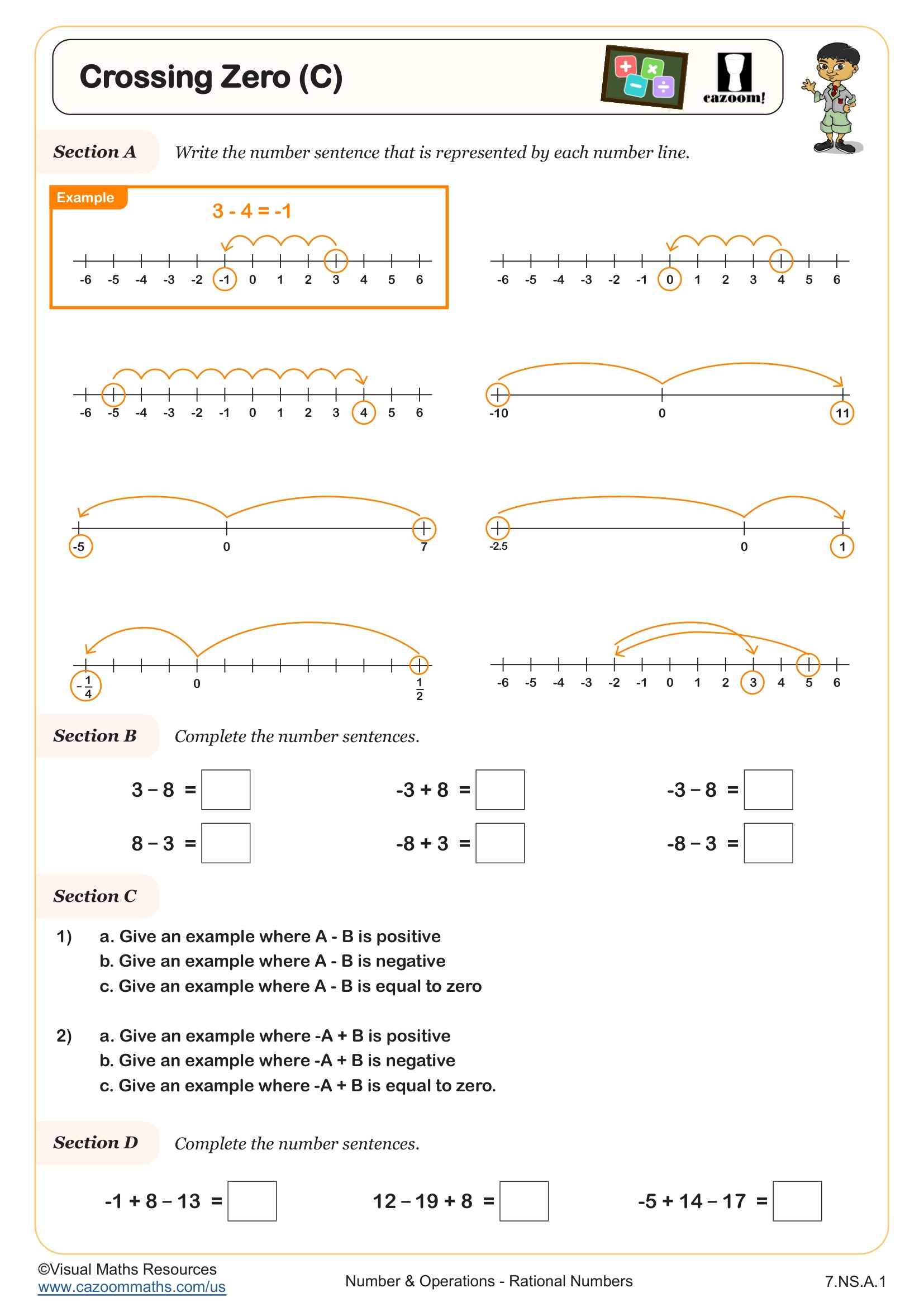
RELATED TO Crossing Zero (C) WORKSHEET
Frequently Asked Questions
This crossing zero (c) worksheet is designed for students in 6th Grade and 7th Grade and aligns with Common Core State Standards.
